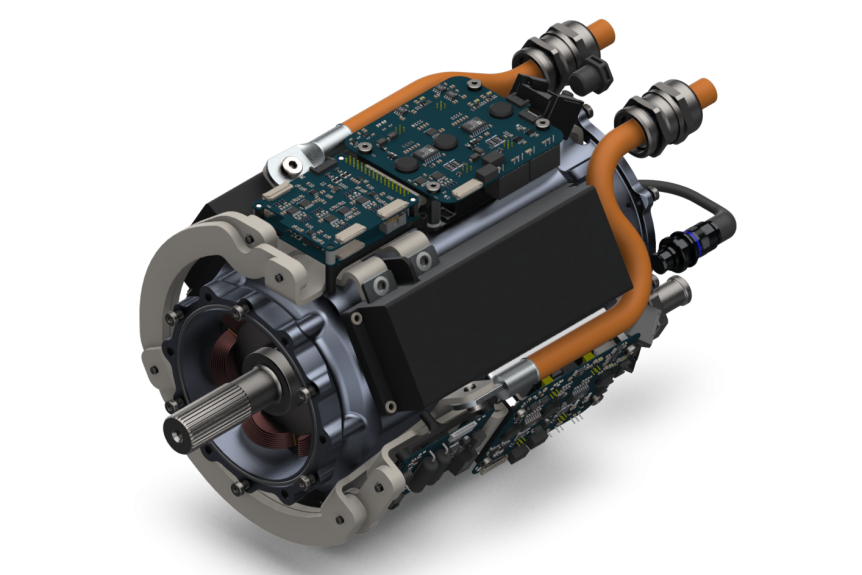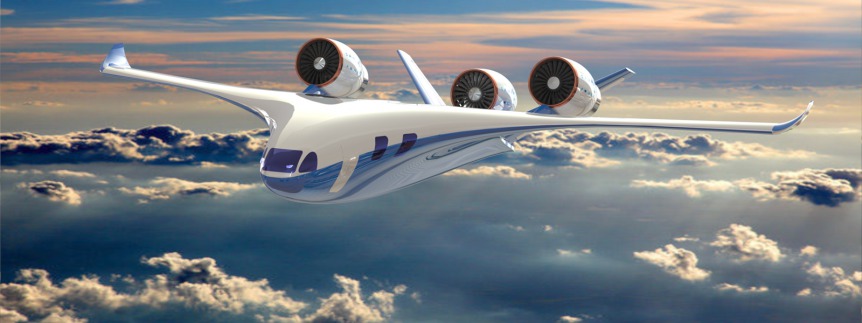H3X, a motor company started by three University of Madison, Wisconsin graduates, promotes its integrated motor/inverter power plant as “the next step in the evolution of electric propulsion technology.” With Their HPDM-250’s 13-kilowatt-per-kilogram continuous power ability, it meets ARPA-E’s (Advanced Research Projects Agency–Energy’s) criteria for powering large, 737-type aircraft. Electronics Weekly reports, “ARPA-E has determined that for a Boeing 737 to complete a typical five hour flight, the propulsion system must be >12 kW/kg continuous.” H3X adds, “These specifications are estimates based on electromagnetic thermal and structural simulations. Data from dynamometer will be available Q2 2021.” Their motor is roughly twice as power dense as MagniX motors of similar power, according to H3X. Weight reduction is an intrinsic part of aircraft design. In the days of internal combustion engines (still very much with us), conventional wisdom held that reducing power plant weight by one pound could help take two pounds off the airframe. Even today, ICE engines generally produce only …
Starling Jet Comes in Three Sizes
The Starling Jet now joins electric or hybrid flying commuter craft from sources all over the world. A Middle-East backed, London-based project, the Starling Jet is swoopy and high-winged, and comes in three sizes with different missions. The Commuter Craft Trifecta Time, a most precious commodity, is the major selling point for most of these sky taxis. Saving an executive’s schedule enhances productivity, whether it’s whisking a CEO over the traffic jams in Dallas or Dubai. For many similar machines, the impetus is to democratize the flight experience, offering many an Uber-like experience at Uber-like prices. Samad Aerospace, creator the Starlings, is looking toward a more exclusive market. All such craft promise the convenience of point-to-point transportation, foregoing intermediate shuttle or cab rides to get to an airport, while expanding the range of takeoff and landing locations. Like Los Angeles, which once required flat roofs on new high-rises to accommodate helicopter traffic, other urban areas may changes zoning and other …
81.5-Hour Solar Flight – Best in Class
Following Andre’ Borschberg’s record-breaking endurance and distance flight in Solar Impulse last month, the accomplishment of a group of Swiss students and their planned trans-Atlantic, solar-powered autonomous flight are equally worthy of consideration. With a much smaller budget than Solar Impulse, the students are planning a 5,000 kilometer (3,100 mile) flight from Bell Island, Canada to Lisbon, Portugal, a seven-day test of self-guided navigation and autonomous airmanship. Recent achievements by the team suggest that success will come from good design and careful planning. Last month, their AtlantikSolar 2 Unmanned Aerial Vehicle made its first 24-hour flight. (The team generously acknowledges American Alan Cocconi’s 48-hour, solar-powered flight with his 13-kilogram (28.6 pound) So Long in 2005.) Only two weeks later, the ETH (Swiss Federal Institute of Technology) Zurich students from the Autonomous Systems Lab managed an 81.5 hour flight that sent their 5.6 meter (18.6 feet) wingspan, 6.8 kilogram (15 pound) UAV 2,316 kilometers (1,436 miles). This broke the world record …
Ion Tiger Exceeds 48 Hours in Flight
Researchers at the U.S. Naval Research Laboratory flew their fuel cell powered Ion Tiger UAV for 48 hours and 1 minute on April 16-18 by using liquid hydrogen fuel in a new, NRL-developed, cryogenic fuel storage tank and delivery system. This flight shatters their previous record of 26 hours and 2 minutes set in 2012 using the same vehicle, but with gaseous hydrogen stored at 5000 psi. The airplane had flown 23 hours, 17 minutes in 2009. The 550 Watt (0.75 horsepower) fuel cell onboard the Ion Tiger has about four times the efficiency of a comparable internal combustion engine and the system provides seven times the energy in the equivalent weight of batteries. The Ion Tiger weighs approximately 37 pounds and carries a 4- to 5-pound payload.” Gerard Thevenot, who flew the English Channel on a hydrogen-powered “trike” in 2009, used about 550 grams per flight hour, with the craft’s 5-liter tank allowing about one hour flying time. …
Dr. Jack Langelaan and Heuristic Navigation Techniques
“Heuristic: involving or serving as an aid to learning, discovery, or problem-solving by experimental and especially trial-and-error methods ; also: of or relating to exploratory problem-solving techniques that utilize self-educating techniques (as the evaluation of feedback) to improve performance ” m-w.com (Merriam-Webster online) Dr. Jack Langelaan’s talk at the fifth annual Electric Aircraft Symposium was one of at least two to use the term, “heuristic,” and sent this writer scrambling for the dictionary. His presence in Santa Rosa, four months ahead of his return with the Green Flight Challenge winning Pipistrel G4, showed at least one of the facets to the planning that would make the G4 victorious. Careful flight planning, as any flying instructor will gladly inform you, is a prerequisite to getting the greatest efficiency out of an airplane. Historically, much flight planning involved following mapped-out air routes and flying at prescribed altitudes, at least in controlled airspace. Recent efforts to release those constraints have come about through …
163 Horsepower from 25 Pounds
ThinGap, LLC is well known for small motors with excellent performance characteristics, eliminating the use of iron and its resultant “lossiness” and depending instead on copper foil, rather than wire windings for its internally clean structure. The design leads to a lack of “cogging,” that notched feeling found when turning over some motors by hand. Each individual magnet causes the rotor to stop, or “cog,” sometimes making low-speed operation a bit hesitant and smooth transitions difficult. That, the unique ring design and an aluminum housing help carry heat away and allow for an internal controller. ThinGap have focused on smaller unmanned aerial vehicle applications for many years, but have moved into larger automotive and aircraft products, with one model in particular capturing our attention. The non-production 14090 ring motor is 14 inches in diameter, weighs 25.6 pounds and can deliver 122 kilowatts (163 horsepower) – about 6.4 horsepower per pound and close to the Halbach array motors of Geoff Long …


